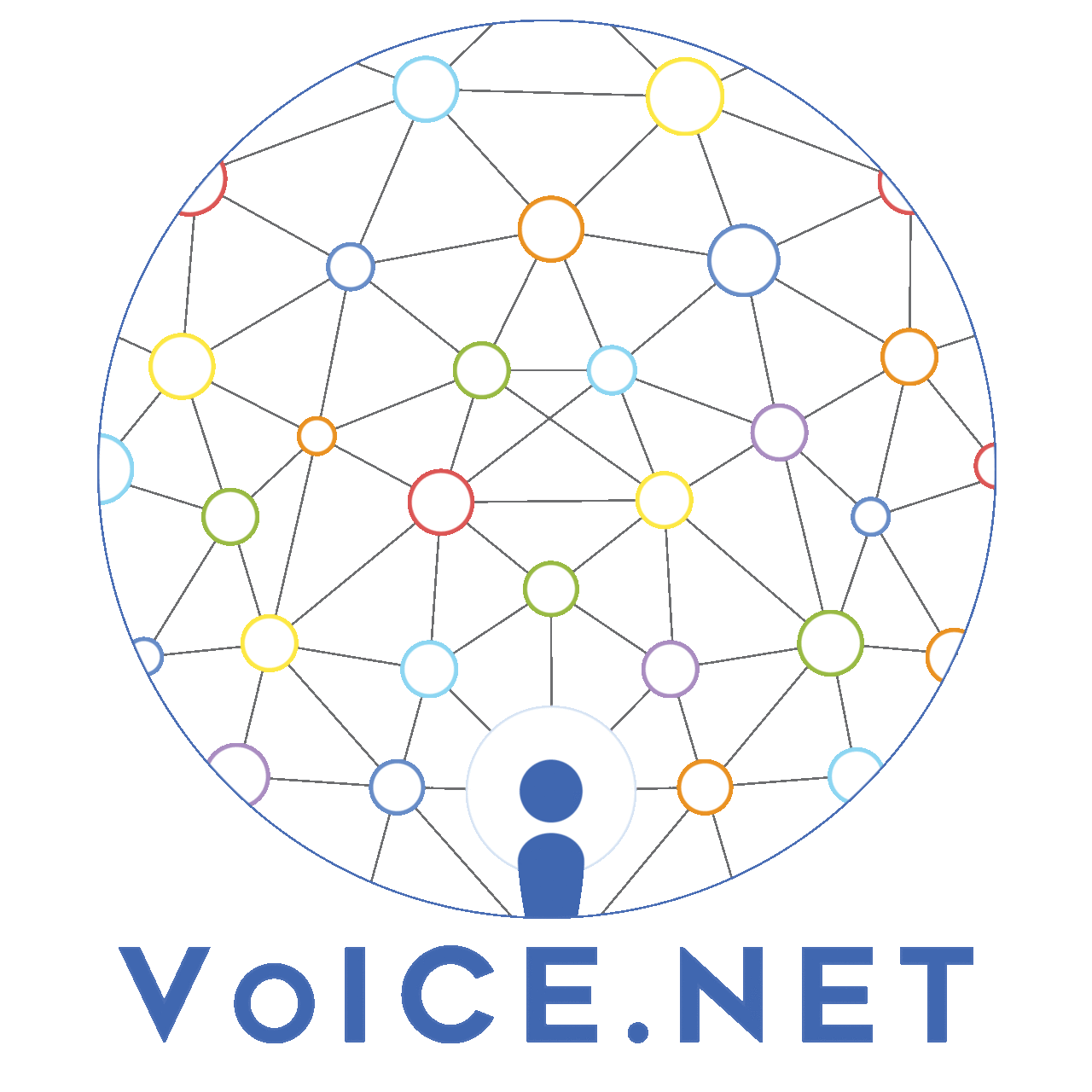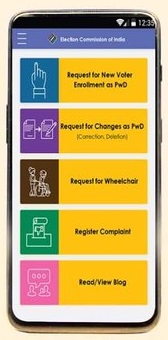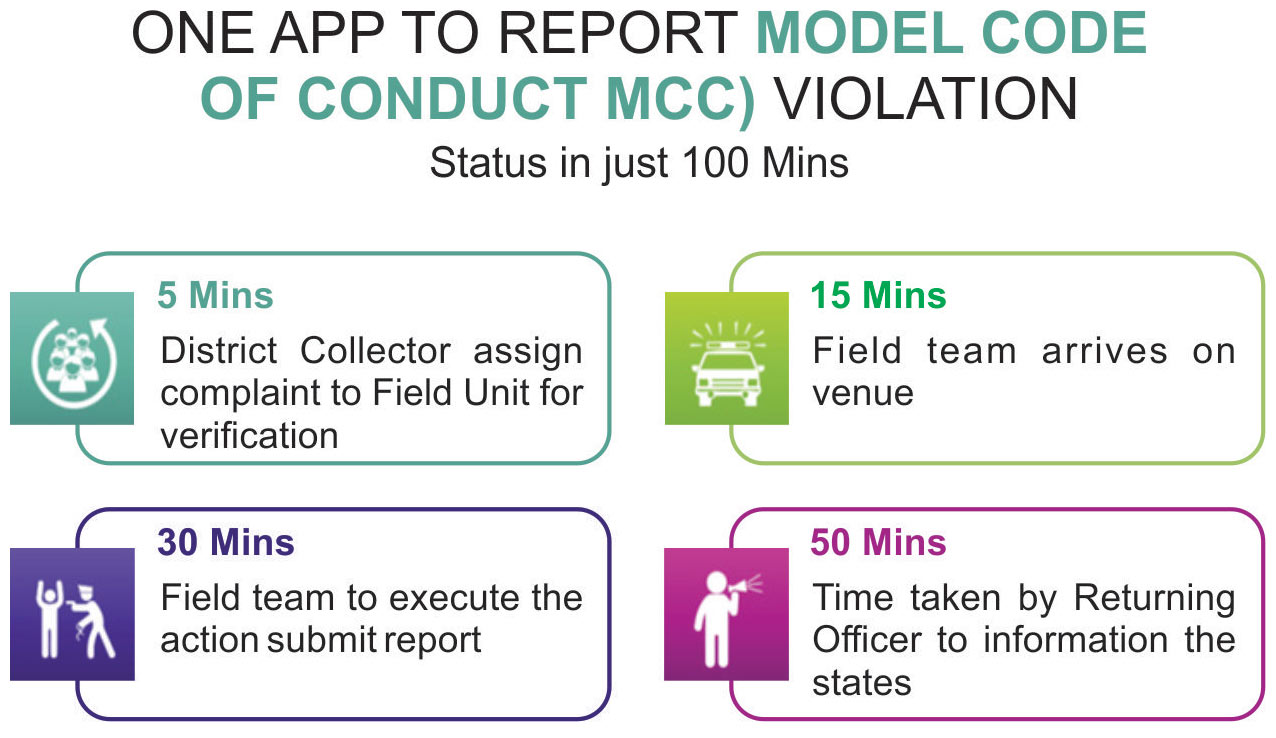
Global Knowledge Network On Voter Education - learning from each other
India, world’s largest democracy is home to more than 922 million voters with such myriad geographical, topographical, ethnic diversities. Working with a premise of ‘No Voter to be Left Behind’ in its connection, ECI has fulfilled its mandate with perfection, precision and as per timelines set forth under the constitutional prescription for over seven decades of glorious journey of elections in India.
Since its inception, innovation and integration of state-of-the –art -technology has been an essential part of the journey of elections in the country. The commission has leveraged technology in every stage of the election process to enhance the efficiency and efficacy of the service delivery systems.
The decade of the 1980s witnessed the first major step in the introduction of technology in the electoral process. In 1982, Electronic Voting Machines (EVMs) were first introduced on an experimental basis for Bye-Election in an Indian State (Kerala). This started on hand, the process of testing and acceptability of the technological aspects of these machines and how they could make the voting and the counting process efficient and accurate.
The first two decades of the 21st Century have seen progressive integration of IT and ICT enabled systems in Indian Elections. The Commission has leveraged technology options especially the digital technology in its run up to the 17th General Election in a big way. Over the last decade, Use of technology has paved a way for new avenues of voter facilitation & making elections more inclusive. From preparation of the election to results, technology is embedded in each step.
Spreading Awareness
In the past two years, the pandemic has posed novel challenges. A paradigm shift in the media landscape also redefined several aspects of voter education. The Commission’s Systematic Voters’ Education and Electoral Participation (SVEEP) is a multi-intervention programme that reaches out to various categories of voters to inform, educate and motivate them regarding the electoral process. SVEEP Programs utilized the digital technology & modern media & communication tool to reach out to voters.
Use of Digital Technology & Social Media: SVEEP played a critical role in educating stakeholders aware about the COVID -19 safety protocols of the Commission. ECI is actively reaching out through Facebook, Instagram, YouTube and Twitter handles. Keeping in mind the change in media consumption patterns, SVEEP programs are adapted accordingly. Online modules have been introduced for Electoral Literacy Clubs in Schools. Web Radio Hello Voters was also launched on 11th National Voters’ Day on January 25, 2021.The 24x7 online web radio service streams voter awareness programmes. Web TV is also under development.
SVEEP Digital Library: A SVEEP digital library is being designed which would ensure that all content on spreading awareness on importance of voting and electoral processes available to all officials and stakeholders across the nation.
The new technological tools empower stakeholders especially the voters in user friendly manner and facilitate electoral participation at all steps across the board. On the other hand, the technology initiatives have made the elections more and more free, fair, inclusive, informed, accessible, safe, transparent and participative. The technology initiatives of the Commission range from awareness generation to registration to facilitation of the voter as well as political parties to ensure a level playing field and declaration of the results besides training and capacity building of the officials.
Electoral Roll Management
Roll is the basic and an essential document for any electoral process. A notification for electing a member of legislature or parliament means calling upon the citizens enrolled as electors in the electoral roll to exercise their suffrage right. An accurate, defect free and healthy roll is a determinant of a free and fair election. The roll delineates inclusion of all eligible electors and exclusion of the ineligible from Participation.
Computerisation of Electoral Rolls: Constitutional mandate for Maintenance of electoral rolls flows to the Election Commission of India from Article 324 and further amplified under the Representation of People Act, 1950 and Registration of Electors Rules, 1960. Electoral Registration Officer (ERO) is the legal authority for the revision of rolls in every assembly constituency. Polling Station wise rolls are prepared in all Assembly Constituencies. Only one general electoral roll is maintained and is revised periodically with reference to a qualifying date i.e. 1st January of the year.
In the year 1997, the Election Commission initiated a country-wide comprehensive programme for computerization of electoral rolls for efficient and accurate maintenance especially in the wake of the scale and size of operations; the largest in the world. IT solutions had to address the challenge of multiple Indian languages in which electoral rolls are maintained.
Photo Electoral Rolls: In the run-up to the 2009 General Elections to the Lok Sabha, computerization along with photographs of the voters was completed on a nationwide basis. Thus, Photo Electoral Rolls were first introduced in General Elections 2009. By now, all the States and UTs have Photo Electoral Rolls (PERs).
ERO-NET: In 2017, a web based system named as ERO-NET was set up as stable platform to all the registration officers to process applications from persons seeking to register as electors and to closely monitor the process throughout the country. ERONET provides seamless processing of registration forms, structured easy handling of the databases, regular and simpler way of monitoring the ER activities to maintain ERs in good health.
Elector Photo Identity Cards: Tryst with Electors Photo Identity Card started in 1986 in many states. In 1993 direction was issued for making EPIC essential document for voting only to be rescheduled to ensure that all States follow and ensure providing EPIC for all the voters. By 1997 ECI had introduced EPICS in all the States. All voters have EPICS now. Braille print EPICS were launched in 2018 for PwD’s (visually impaired)
e-Elector Photo Identity Card: This year ECI has launched the new eElector Photo Identity Card initiative by way of handing over the digital EPIC to new voters on the eve of NVD 2021. This would be very useful for the voters as also it will improve the efficiency at the polling stations.
Photo Voter Slips/ Voter Information Slips: The Commission has ensured that an official voter slip with a photograph of the elector is distributed in time well in advance of the date of the poll as per a time schedule. A close monitoring of the distribution process is done by DEO’s and General Observers. Booth Level Officers (BLOs) are entrusted with the responsibility of handing over voter slips to electors. Political parties are also kept apprised of the distribution schedule. The Voter slips now stand substituted by Voter Information Slips from the last General Elections to the State Assemblies in March, 2021. Accessible Photo Voter Slips with Braille Features Persons with Disabilities (Visually impaired) are provided to facilitate equal access.
Facilitation
The Commission enhanced use of Information and Communication Technology to strengthen citizen participation and transparency also integrate the functions of election officials. Use of digital technology has been further encouraged to neutralize the impact of COVID- 19 pandemic as it offers contactless operations. A brief discussion on ICT initiatives follows:
National Service Voter’s Portal: NVSP – National Voters Service Portal to process the forms received is a Secured online platform with the aim to provide online hassle-free services to the citizens through a single window system for all voter related services including new voter registration and with the foremost priority to protect the voter’s personal information.
Voter Portal for IT Driven Electoral Services: Election Commission of India has launched a new ‘Voter Portal’ https://voterportal.eci.gov.in/ to provide a seamless interface for registration, alteration in entries, deletion, change of the address etc for voters. After logging into the portal, a citizen is now presented with an interactive interface suggesting a selection of choices based upon his previous selection. All websites of the commission are duly accessible for Persons with Disabilities.
Voter Helpline App: Taking forward its continuous efforts of building an active democratic citizenry in the country. The Election Commission of India has undertaken a new initiative by designing a Mobile Application for developing a culture of avid electoral engagement and making informed and ethical ballot decisions among citizens of the country. The app aims to provide a single point of service and information delivery to voters across the country.
 PwD App: PwD app helps People with Disabilities. PwD electors can register requests for marking as PwD’s, new registration, migration, correction in EPIC details, wheelchair etc. It utilises the Accessibility features of mobile phones for voters with blindness and hearing disabilities. The Application is available on the Google Play Store and can be downloaded.
PwD App: PwD app helps People with Disabilities. PwD electors can register requests for marking as PwD’s, new registration, migration, correction in EPIC details, wheelchair etc. It utilises the Accessibility features of mobile phones for voters with blindness and hearing disabilities. The Application is available on the Google Play Store and can be downloaded.
cVIGIL App: cVIGIL provides time- stamped evidentiary proof of the Model Code of Conduct / Expenditure Violation by empowering every citizen to click a photo or video using his or her Smartphone. The application is based on GIS technology. A unique feature of auto location provides fairly reliable and correct information for action by flying squads to navigate to the right spot of incidence and take prompt action. This App prioritizes the speedy and effective actions by authorities and promises users status reports within 100 Minutes.

Voter Helpline Number: The Commission Established Helpline at toll free number1950 with a view to facilitate voter registration. One can call this number or send a message for any information related to elections, voting dates, EPIC, electoral roll, online registration or lodge a complaint.
Facilitating the political parties
Online filing of Nominations: The Nomination process draws a large number of people to the Election Office premises. Therefore, for public health safety, during General Election to State Assembly in Bihar (2020) additional options were provided to facilitate online mode for filing Nominations, uploading of accompanying documents and deposit security for the nomination process.
Political Parties Registration Tracking Management system (PPRTMS): PPRTMS is an online portal to facilitate tracking of the progress status of the application for registration of the political party. Applicants get a status update through SMS and emails.
Facilitating the election officials
Training & Capacity Building: IT base operations are being used by the Commission for training and Capacity building, webinars, web based monitoring of election processes. IT application as such has reduced the impact of COVID-19 in many operational areas.
Garuda App: GARUDA (Geographical Asset Reconnaissance Unified Digital App) integrates all functions of BLOs (Booth Level Officers) and help them to complete field verification in lesser time in the current pandemic situation using this App and Speed up the application form processing.
Observer App: The app is used to manage Observers Deployment. Observers get a complete deployment schedule on their mobile. Moreover, all notices, meeting invites, constituency details are available on the observer app. It is also used by observers to file their statutory reports.
Casting Vote
Electronically Transmitted Postal Ballot System (ETPBS) for Service Voter: ETPBS facility was extended to all Service Voters like it was during the last Parliament General Elections in 2019. During Special Summary Revision of the last part of electoral rolls, serious efforts were made by the Commission to maximize the enrollment of service voters with correct particulars.
Booth App: Booth App facilitates faster identification of voters using encrypted QR code, printed on photo voter slips, from the digital marked copy of the electors. This helps in reducing queue load, helps in faster polling and allows error-free recording of two hourly poll turnouts with minimal intervention. Now, in view of COVID-19 situation wherever possible, Booth App is used at the polling stations.
Electronic Voting Machines: ECI introduced the Electronic Voting Machines (EVMs) in 1982 on an experimental basis at fifty polling stations under 70-Paravur Assembly Constituency (AC) of Kerala. In the 2004 General Election to the Lok Sabha, EVMs were used in all 543 PCs for the elections. A new technologically advanced voting system completely replaced the erstwhile voting method of using ballot papers. Braille enabled’ EVM’s have also been introduced by the Commission for facilitating the PwD’s with visual impairments.
Results Website and Results Trends TV: The timely publication of the round-wise information is vital for establishing a single source of authentic data. The counting data entered by respective Returning Officers is available as ‘Trends and Results’ for public view through ’ECI Results website’. The results are shown with the Info graphics and displayed with auto-scroll panels through large display screens outside the counting hall or any public place. During the last 50 years, Technology has become an integral part of all the components of the Indian electoral system from registration to results. It has substantially increased the efficacy and efficiency of the entire election delivery system, its integrity and user friendly nature to the benefit of all categories of voters and as such all other stakeholders. This integration has helped deliver all its elections well on time with high levels of integrity and credibility.
Voter Verifiable Paper Audit Trail (VVPAT): ECI added the use of Voter Verifiable Paper Audit Trail (VVPAT) to enhance and strengthen transparency in EVM based Voting System. Introduced in 2013, VVPAT emerged as an important measure of transparency in the EVM-based voting system. Every voter can visually confirm the choice exercised by him in the ballot unit.
Use of EVM and VVPAT in the elections to the Parliamentary and Legislative Assembly constituencies in India since have brought about a sea change in our electoral system. Simple, user-friendly, efficient and transparent nature of the EVM polling process has been widely accepted as an efficient and accurate means of expression of the will by all sections of the electorate.
Election Results
ENCORE Counting: The ENCORE counting application https://encore.eci.gov.in/officer-login is an end-to-end application for returning officers to digitize the votes polled, tabulate the round-wise data and then take out various statutory reports of counting.
Voter Turnout App: Voter Turnout App is used to display real-time estimated provisional voter turnout details of each Assembly Constituency/ Parliamentary Constituency entered by Returning officers.
Results Website and Results Trends TV: The timely publication of the round-wise information is vital for establishing a single source of authentic data. The counting data entered by respective Returning Officers is available as ‘Trends and Results’ for public view through ’ECI Results website’. The results are shown with the Info graphics and displayed with auto-scroll panels through large display screens outside the counting hall or any public place. During the last 50 years, Technology has become an integral part of all the components of the Indian electoral system from registration to results. It has substantially increased the efficacy and efficiency of the entire election delivery system, its integrity and user friendly nature to the benefit of all categories of voters and as such all other stakeholders. This integration has helped deliver all its elections well on time with high levels of integrity and credibility.
Contributor:
Editor-in-Chief, VoICE Interntaional
Umesh Sinha,
Secretary General,
Election Commission of India